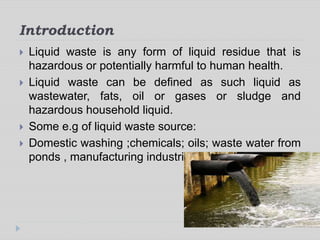The 5-Minute Rule for Reclaim Waste
All About Reclaim Waste
Table of ContentsThe Definitive Guide to Reclaim WasteSome Of Reclaim WasteWhat Does Reclaim Waste Do?The Buzz on Reclaim WasteThe Basic Principles Of Reclaim Waste
Residential sewage waste refers to the waste and items from a property septic tank. The correct monitoring and disposal of domestic sewage waste require fluid waste to be transferred to a sewage treatment plant where the correct methods and devices are applied to detoxify and dispose of waste.
Commercial waste often includes possible threats, such as flammable products or a mixture of liquid and strong waste items, and needs an advanced and in-depth disposal process. The disposal of business waste normally includes the purification of waste before transportation to make certain risk-free and correct disposal. Industrial waste is produced from results and runoff of industrial procedures and production.
This sort of waste can not use the same sewage administration transportation or processes as septic or business fluids. The industrial waste administration procedure needs the inspection and testing of liquid waste prior to it undertakes the disposal process (liquid waste disposal). Drainage waste is the fluid waste that comes from overflow and excess stormwater in very populated areas or cities
Runoff waste can create contamination and flooding otherwise handled correctly. Discover extra concerning sewer cleaning and waste administration. Making sure correct waste management can prevent disasters and decrease environmental harm. Both people in residential settings and professionals in business or production markets can take advantage of recognizing the processes and regulations of fluid waste monitoring.
The Reclaim Waste Diaries
Contact PROS Providers today to find out about our waste management and disposal solutions and the proper means to take care of the liquid waste you generate.
(https://reclaim-waste-48112599.hubspotpagebuilder.com/reclaim-waste/expert-liquid-waste-removal-and-disposal-services-your-complete-guide)Do you know what happens to your water when you end, flush the commode or drain pipes the washing machine? No? Well, it deserves recognizing. This so-called 'wastewater' is not only a crucial resource but, after therapy, will certainly be released to our land, waterways or the ocean. Made use of water from bathrooms, showers, baths, cooking area sinks, washings and commercial processes is known as wastewater.

water helpful resources made use of to cool down equipment or clean plant and equipment). Stormwater, a kind of wastewater, is runoff that flows from farming and urban locations such as roof coverings, parks, gardens, roadways, paths and gutters into stormwater drains pipes, after rain. Stormwater streams neglected directly to local creeks or rivers, at some point reaching the sea.
The Best Strategy To Use For Reclaim Waste
In Queensland, many wastewater is dealt with at sewage treatment plants. Wastewater is moved from domestic or industrial sites through a system of drains and pump stations, known as sewerage reticulation, to a sewer therapy plant.
The Department of Natural Resources encourages neighborhood federal governments concerning handling, operating and keeping sewage systems and treatment plants. In unsewered locations, city governments might require homeowners to install individual or family sewage therapy systems to deal with residential wastewater from toilets, kitchens, restrooms and washings. The Division of Natural Resources authorises the use of household systems when they are shown to be effective.
Most stormwater receives no therapy. In some new neighborhoods, treatment of some stormwater to get rid of trash, sand and gravel has actually begun using gross pollutant catches. Wastewater therapy takes place in 4 stages: Removes solid issue. Larger solids, such as plastics and various other things wrongly released to sewage systems, are gotten rid of when wastewater is passed with screens.
Wastewater then moves into big storage tanks where solids resolve and are eliminated as sludge. Oil and residue are skimmed from the surface. Utilizes little living organisms referred to as micro-organisms to break down and eliminate remaining liquified wastes and fine bits. Micro-organisms and wastes are incorporated in the sludge. Gets rid of nitrogen and phosphorus nutrients that could trigger algal flowers in our waterways and threaten aquatic life.
4 Simple Techniques For Reclaim Waste
Nutrient elimination is not available in any way sewer therapy plants due to the fact that it needs expensive specialised devices. It is ending up being a lot more usual in Queensland. Clear fluid effluent produced after treatment may still have disease-causing micro-organisms. If this effluent is launched right into waterways such as rivers or the sea, the micro-organisms will ultimately die out.

This normally suggests wastewater has actually to be treated or impurities removed prior to it can be released to waterways. The majority of wastewater flows right into the sewage system. Under the Act, city governments carry out authorizations and licences for environmentally relevant tasks (ERAs) involving wastewater launches that may have a regional effect. The division carries out authorizations and licences to Periods entailing wastewater releases that may have a local or statewide effect.
The Only Guide for Reclaim Waste
Otherwise, samples are considered lab analysis. Often many tests are needed to establish the levels of each of the different toxins such as oils, hefty metals and pesticides in water. Monitoring gives accurate info regarding water high quality and can validate that permit problems are being satisfied. The info acquired via surveillance gives the basis for making water high quality decisions.